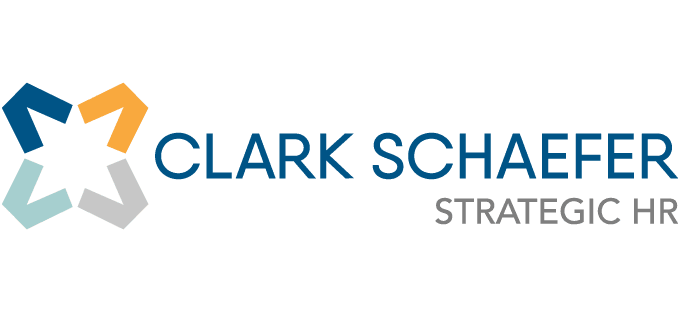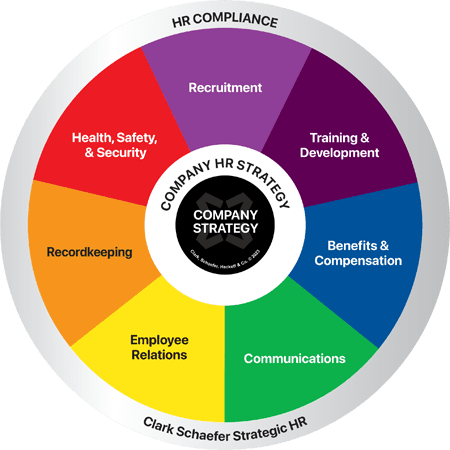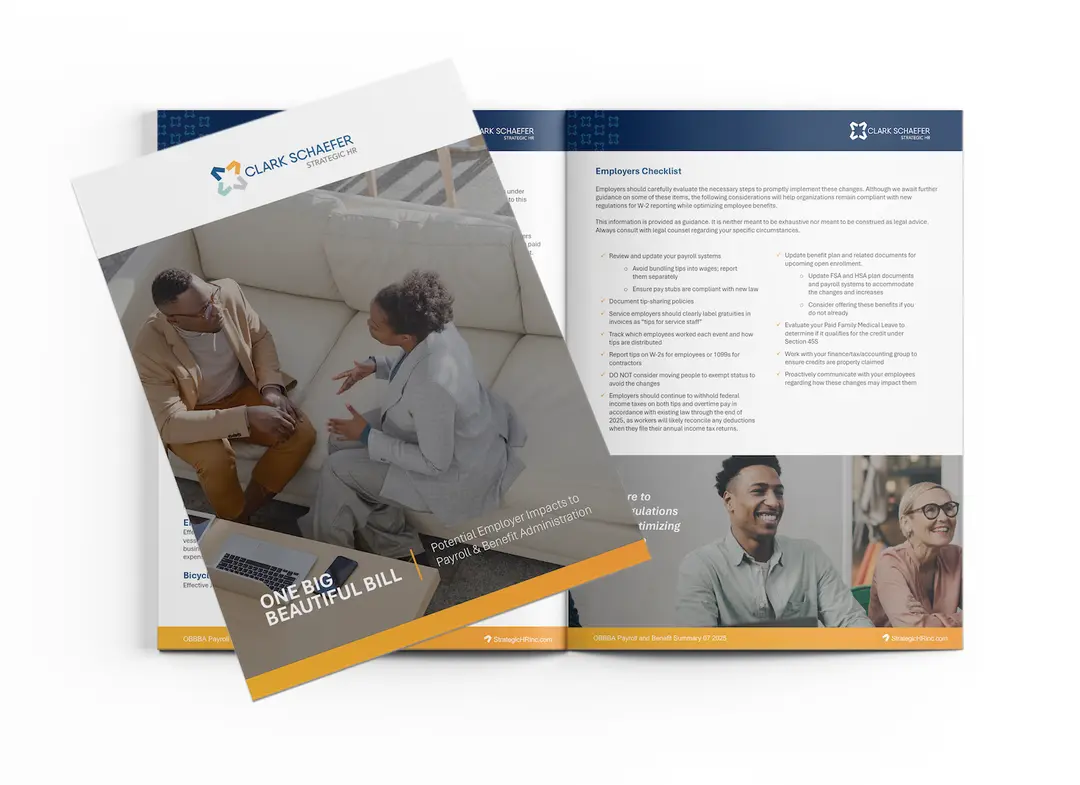Benefits & Compensation Questions of the Week
Do I Have to Provide Employees Time Off to Vote?
Last Updatedin Benefits & Compensation, Communications, HR Compliance Question of the Week
What Role Should HR Play in Benefits Open Enrollment to Ensure Success?
Last Updatedin Benefits & Compensation Question of the Week
One Big Beautiful Bill – Potential Impacts for Payroll and Benefits
in Benefits & Compensation Guide
Employee Benefits Trends 2025–2026: Attracting Top Talent
Last Updatedin Benefits & Compensation Question of the Week
Are Wellness Program Incentives Taxable?
Last Updatedin Benefits & Compensation Question of the Week
What Employers Need To Know About Michigan’s Earned Sick Time Act (ESTA)
Last Updatedin Benefits & Compensation, HR Compliance Question of the Week
How Can I Use Salary Benchmarking As a Recruitment Strategy?
Last Updatedin Benefits & Compensation, Recruitment, Videos Question of the Week, Video
Do I Have to Give Performance Bonuses to Employees on FMLA Leave?
Last Updatedin Benefits & Compensation Question of the Week
What are the Latest ACA Reporting Changes and Deadlines?
Last Updatedin Benefits & Compensation, HR Compliance Question of the Week
Can I backdate FMLA paperwork?
Last Updatedin Benefits & Compensation, HR Compliance, Recordkeeping Question of the Week
Can We Cut a Live Check to Entice an Employee to Return Company Property?
Last Updatedin Benefits & Compensation, HR Compliance Question of the Week
Can My Employee Take a Vacation While on FMLA Leave?
Last Updatedin Benefits & Compensation, Employee Relations Question of the Week
How Can We Address Pay Compression?
Last Updatedin Benefits & Compensation Question of the Week
Employee’s Failure to Pay Premiums Under FMLA Protected Leave
Last Updatedin Benefits & Compensation Question of the Week
What Is the Difference Between FSAs and HSAs
Last Updatedin Benefits & Compensation Question of the Week
What Are Total Compensation Statements?
Last Updatedin Benefits & Compensation Question of the Week
When Do I Have to Deliver an Employee’s Final Paycheck?
Last Updatedin Benefits & Compensation Question of the Week
What is Equal Pay Day?
Last Updatedin Benefits & Compensation Question of the Week
Could Sabbaticals Be Your Next Retention Tool?
Last Updatedin Benefits & Compensation, Employee Relations Question of the Week
Low Cost Benefit Ideas
Last Updatedin Benefits & Compensation Question of the Week
What are the Advantages of Financial Wellness Programs?
Last Updatedin Benefits & Compensation Question of the Week
Aligning Compensation with Strategic Business Imperatives
Last Updatedin Benefits & Compensation Question of the Week
Smartphone Usage After Hours
Last Updatedin Benefits & Compensation Question of the Week
What Are the Benefits of Total Compensation Statements?
Last Updatedin Benefits & Compensation Question of the Week
Do you know if you need to pay an intern or not?
Last Updatedin Benefits & Compensation Question of the Week
FMLA Expiration and COBRA
Last Updatedin Benefits & Compensation, HR Compliance Question of the Week
Are Employee Gift Cards Considered Taxable Benefits?
Last Updatedin Benefits & Compensation, HR Compliance Question of the Week
Mental Health Concerns in the Workplace
Last Updatedin Benefits & Compensation, Health, Safety & Security, HR Strategy Question of the Week
Bonus Grants: A Creative Way to Retain and Reward Key Employees
Last Updatedin Benefits & Compensation Question of the Week
Do I Have to Allow Employees to “Opt Out” of Pre-Tax Deductions?
Last Updatedin Benefits & Compensation Question of the Week
Handling Employee Pay when Bad Weather Hits
Last Updatedin Benefits & Compensation Question of the Week
Are you familiar with the Portal-to-Portal Act?
Last Updatedin Benefits & Compensation Question of the Week
Department of Labor’s Wage and Hour Divisions Email Service
Last Updatedin Benefits & Compensation Question of the Week
Co-op and Intern Exemption Status
Last Updatedin Benefits & Compensation Question of the Week
Pre-tax and Post-tax on Benefits
Last Updatedin Benefits & Compensation Question of the Week
Paying to Get Ready for Work
Last Updatedin Benefits & Compensation Question of the Week
Voluntary Classification Settlement Program
Last Updatedin Benefits & Compensation, HR Compliance Question of the Week
Snow Storm Pay
Last Updatedin Benefits & Compensation Question of the Week
Volunteer Time
Last Updatedin Benefits & Compensation Question of the Week
When to Offer a Part-Time Employee Company Benefits
Last Updatedin Benefits & Compensation Question of the Week
Am I Required to Offer COBRA?
Last Updatedin Benefits & Compensation, HR Compliance Question of the Week
Paying Employees for Work-Related Activities
Last Updatedin Benefits & Compensation Question of the Week
Exemption Status of Inside Sales
Last Updatedin Benefits & Compensation Question of the Week
Contact Us
Clark Schaefer Strategic HR
10856 Reed Hartman Hwy
Suite 225
Cincinnati, OH 45242

Clark Schaefer Strategic HR is recognized by SHRM to offer Professional Development Credits (PDCs) for SHRM-CP® or SHRM-SCP® recertification activities.
The information provided on this website does not, and is not intended to, constitute legal advice; instead, all information, content, and materials available on this site are for general informational purposes only. Readers of this website should contact their attorney to obtain advice about their particular situation and relevant jurisdiction. This website contains links to other third-party websites. These links are only for the convenience of the reader, user or browser; Strategic HR does not recommend or endorse the contents of the third-party sites.




